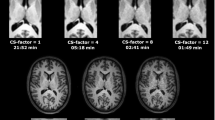Abstract
Multi-modal registration between 3D ultrasound (US) and magnetic resonance imaging (MRI) is motivated by aims such as image fusion for improved diagnostics or intra-operative evaluation of brain shift. In this work, we present a rigid region-based registration approach between MRI and 3D-US based on the segmentation of equivalent anatomic structures in both modalities. Our feasibility study is performed using segmentations of the midbrain in both MRI and 3D transcranial ultrasound. Segmentation of MRI is based on deformable atlas registration while for 3D US segmentation, we recently proposed an accurate and robust method based on statistical shape modeling and a discrete and localized active surface segmentation framework. The multimodal registration is performed through intensity-based rigid registration of signed distance transforms of both segmentations. Qualitative results and a demonstration of the basic feasibility of the region-based registration are demonstrated on a pair of MRI and challenging 3D transcranial US data volumes from the same subject.
Access this chapter
Tax calculation will be finalised at checkout
Purchases are for personal use only
Preview
Unable to display preview. Download preview PDF.
Similar content being viewed by others
References
Huang X, Hill NA, Ren J, et al. Dynamic 3D ultrasound and MR image registration of the beating heart. In: Proc MICCAI; 2005. p. 171–8.
Winter S, Dekomien C, Hensel K, et al. [Registration of intraoperative 3D ultrasound with preoperative MRI data for computer-assisted orthopaedic surgery]. Z Orthop Unfall. 2007;145:586–90.
Blackall JM, Penney GP, King AP, et al. Alignment of sparse freehand 3-D ultrasound with preoperative images of the liver using models of respiratory motion and deformation. IEEE Trans Med Imaging. 2005;24:1405–16.
Reinertsen I, Descoteaux M, Siddiqi K, et al. Validation of vessel-based registration for correction of brain shift. Med Image Anal. 2007;11:374–88.
Blumenthal T, Hartov A, Lunn K, et al. Quantifying brain shift during neurosurgery using spatially tracked ultrasound. Proc SPIE. 2005;5744:388.
Letteboer MM, Willems PW, Viergever MA, et al. Brain shift estimation in imageguided neurosurgery using 3-D ultrasound. IEEE Trans Biomed Eng. 2005;52:268–76.
Berg D, Seppi K, Behnke S, et al. Enlarged substantia nigra hyperechogenicity and risk for Parkinson disease: a 37-month 3-center study of 1847 older persons. Arch Neurol. 2011;68:932–7.
Feldman M, Tomaszewski J, Davatzikos C. Non-rigid registration between histological and MR images of the prostate: A joint segmentation and registration framework. Proc IEEE CVPR Workshops. 2009;1:125–32.
Ahmadi SA, Baust M, Karamalis A, et al. Midbrain segmentation in transcranial 3d ultrasound for parkinson diagnosis. In: Proc MICCAI; 2011. p. 362–9.
Borgefors G. Hierarchical chamfer matching: A parametric edge matching algorithm. IEEE Trans Pattern Anal Mach Intell. 1988;10(6):849–65.
Lankton S, Tannenbaum A. Localizing region-based active contours. IEEE Trans Image Process. 2008;17(11):2029–39.
Glocker B, Komodakis N, Tziritas G, et al. Dense image registration through MRFs and efficient linear programming. Med Image Anal. 2008;12(6):731–41.
Talos IF, Wald L, Halle M, et al. Multimodal SPL Brain Atlas Data. http://www.spl.harvard.edu/publications/item/view/1565, last accessed; 2011.
Author information
Authors and Affiliations
Corresponding author
Editor information
Editors and Affiliations
Rights and permissions
Copyright information
© 2012 Springer-Verlag Berlin Heidelberg
About this chapter
Cite this chapter
Ahmadi, SA., Klein, T., Plate, A., Boetzel, K., Navab, N. (2012). Rigid US-MRI Registration Through Segmentation of Equivalent Anatomic Structures. In: Tolxdorff, T., Deserno, T., Handels, H., Meinzer, HP. (eds) Bildverarbeitung für die Medizin 2012. Informatik aktuell. Springer, Berlin, Heidelberg. https://doi.org/10.1007/978-3-642-28502-8_71
Download citation
DOI: https://doi.org/10.1007/978-3-642-28502-8_71
Published:
Publisher Name: Springer, Berlin, Heidelberg
Print ISBN: 978-3-642-28501-1
Online ISBN: 978-3-642-28502-8
eBook Packages: Computer Science and Engineering (German Language)




